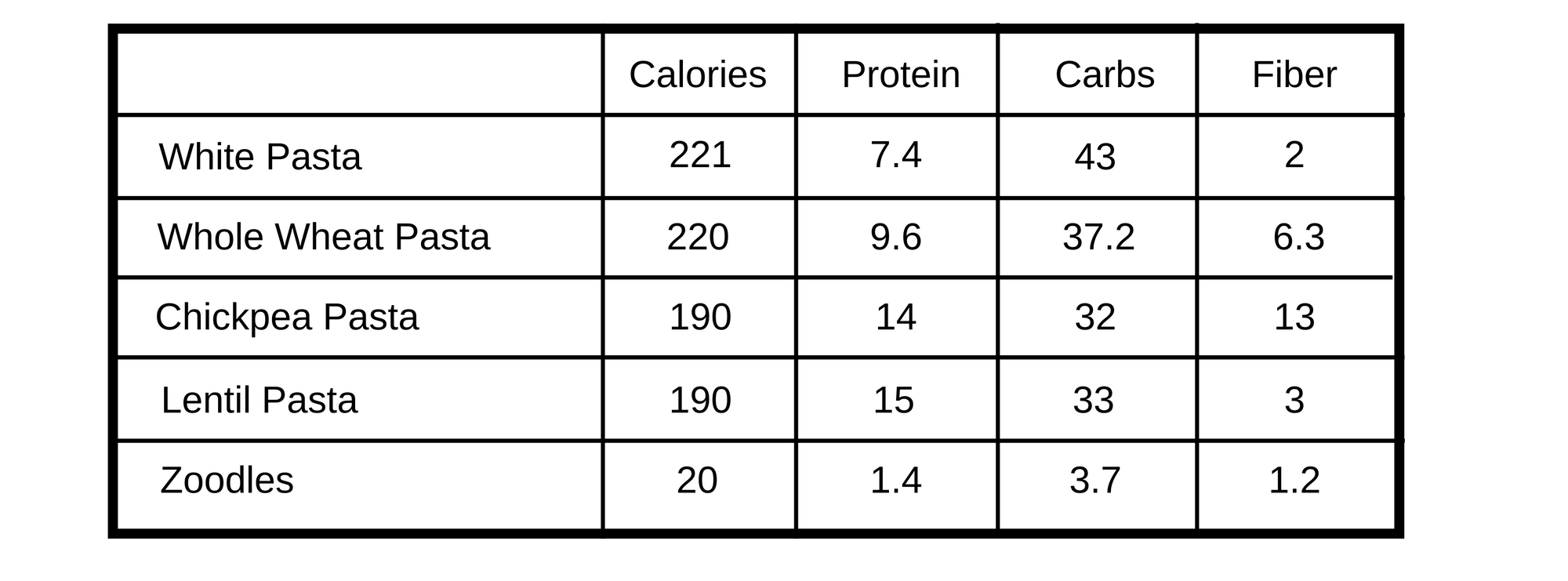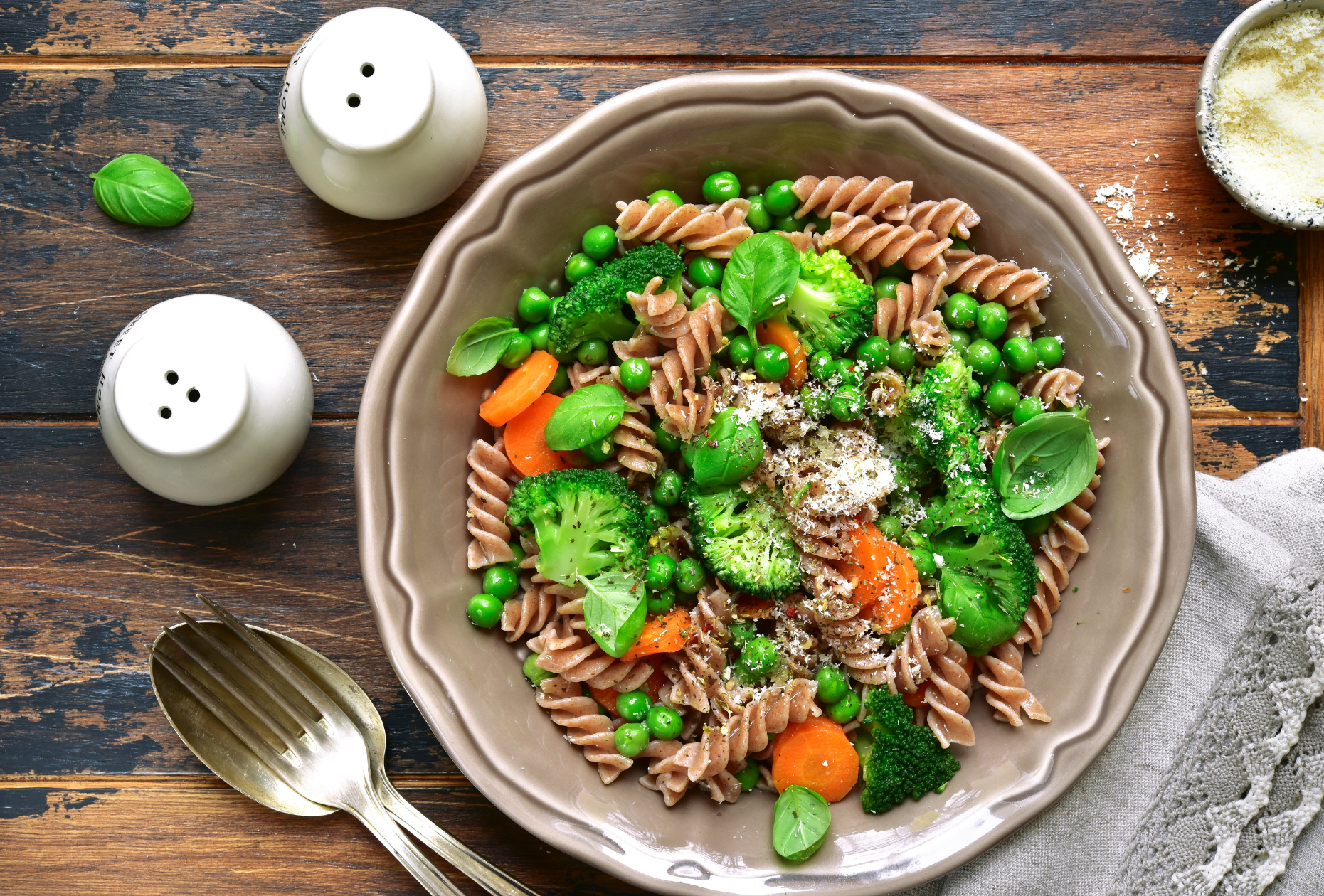Ever wonder how your favorite comfort food stacks up in the nutrition department? Or do you avoid pasta because you fear it may lead to weight gain? The experts have the answers and they may surprise you.
Loved the world over by foodies and toddlers alike, pasta is one of the most versatile foods on the planet. Today’s pasta comes in an array of shapes, sizes, flavors, and nutritional profiles and can be served in countless ways to satisfy just about any palate and dietary need. Pasta is prized for its ease of preparation, affordability, and taste. But in some circles, pasta gets a bad name for its supposed ability to lead to weight gain. So how healthy is pasta? Does it really lead to extra pounds? Read on to learn fact from fiction when it comes to pasta and our health.
Is there a link between pasta and gaining weight?
In the pursuit of losing weight, many people view carbohydrate-rich foods as the enemy. Carbohydrates are the sugar, starches, and fiber found in our food that provide our main source of energy. Simple carbohydrates cause a sudden spike in blood sugar that activates the pancreas to produce more insulin. The insulin that regulates our blood sugar also promotes the storage of fat. Because pasta is high in carbohydrates, some believe that an associated insulin bump predisposes us for weight gain. Is this claim true? Not necessarily. When it comes to pasta and your risk for gaining weight, the amount you eat and the type you eat are what makes all the difference. Eaten in moderation and combined with nutrient-rich foods, pasta can certainly be enjoyed in any healthy weight loss plan.
How does pasta affect our blood sugar?
White pasta is a high starch carbohydrate food, and starchy foods, like white bread, potatoes, and rice, elevate our blood sugar more rapidly. Interestingly, despite its significant starch content, pasta does not cause as rapid of a blood sugar spike as similar foods. What explains this? In pasta dough, large protein molecules surround and trap the starch particles making them less digestible, reducing the need for rapid insulin secretion.
The scoop on gluten-free pastas
A large number of gluten-free pastas are commercially available that are primarily made of rice, quinoa, corn, lentil, or bean flours and come in the same shapes, colors, and sizes as conventional pastas. When shopping, choose gluten-free pastas with health-promoting ingredients. Pasta made from rice and corn can elevate blood sugar more rapidly than white pasta because they are higher in starch than wheat, whereas pasta made from legumes including beans and lentils pack a healthy dose of fiber and protein and keep your blood sugar more steady.

How healthy are pasta alternatives?
Grocery store shelves are stocked with alternatives to conventional pasta, and whole wheat pasta is one of the most widely enjoyed today. Whole wheat flour grains are much less processed than white, retaining the bran and germ for a boost in dietary fiber and other nutrients. When considering the different pasta alternatives, it is useful to compare their nutritional profiles:

What is the bottom line? Conventional pasta is highest in calories and carbohydrates and falls short in protein and fiber compared with chickpea and lentil pasta. Zoodles boast a low calorie and carbohydrate count but lack much in the way of protein and fiber. When you shop for pasta, read the nutrition labels to make the healthiest option for you.
Tips to keep your pasta healthy
Þ Go for the whole grain. If gluten is not a concern, choose whole wheat over white. Look for whole grain durum wheat as the main ingredient. Whole wheat pasta is higher in fiber, antioxidants, and B vitamins and helps steady blood sugar levels, keeps our heart healthy, and can aid in weight loss by reducing appetite.
Þ Pair your pasta with healthy ingredients. What you put in your pasta will determine whether your meal is nutritious or full of empty calories. Mix in vegetables and lean protein like chicken, turkey, lentils, and tofu to maximize nutrition, manage blood sugar, and keep you satiated for longer. Instead of a caloric cream-based sauce, opt for a lighter tomato-based sauce instead.
Þ Avoid overcooking. Some experts suggest that pasta that is overcooked can cause a higher rise in blood sugar than pasta that is al dente, or cooked firm to the bite, because it absorbs more water and causes the starch to swell. Follow the package cooking directions to ensure that perfect chew and keep your blood sugars from elevating too quickly.
Þ Watch your portion size to keep from gaining weight. The math is simple: when you eat more calories than you expend, you are likely to gain weight, and research shows you are more likely to overeat when your portions are larger. Because of this, it is essential to be mindful of your portion size to avoid this pitfall and keep your calorie count in check. Not sure how much is too much? A single serving of pasta is 1 cup cooked, which is the same size as a closed fist.

Looking for easy and nutritious pasta recipes to try at home? See below for two healthy recipes that will be sure to please your palate.
Healthy Pasta Primavera Serves 4
Ingredients:
8 ounces whole wheat pasta
2 cups marinara sauce warmed up (look for a low fat, low sugar variety)
2 tsp olive oil
1 yellow squash, sliced
1 zucchini, sliced
1 cup of mushrooms, thinly sliced
1/2 cup red onion, chopped
2-3 cloves of garlic, chopped
1 red or yellow bell pepper, chopped
2 cups fresh spinach
Salt and pepper to taste
1/2 cup grated parmesan cheese (optional)
Instructions:
1. Bring a large pot of water to a boil and cook the pasta according to the package directions.
2. While the pasta is boiling, heat 2 tsp of olive oil in a large sauté pan. Add the red onion, bell pepper, and garlic and sauté for 2 minutes.
3. Add the yellow squash, zucchini, and mushrooms and sauté for another 2 mins.
4. Add the spinach and sauté until fully wilted and cooked.
5. Add the cooked veggies into the pot of prepared pasta (after the water has been drained) and sprinkle with salt and pepper.
6. Add in the heated up marinara sauce and toss to coat everything.
7. Sprinkle with parmesan cheese and serve.
Zoodles with Creamy Avocado Pesto Serves 4
Ingredients:
2-3 zucchinis, spiralized into zoodles or cut into 1/4 inch wide strips
1 ripe avocado
1/2 cup fresh basil leaves
3-4 cloves of garlic
1 tbsp lemon juice
3 tbsp olive oil
1.5 cups cherry tomatoes
1 tsp Italian seasoning
Salt and pepper to taste
1/4 cup parmesan cheese (optional)
Instructions:
- Heat oven to 350 degrees.
2. In a small baking dish combine 2-3 of the garlic cloves, roughly chopped, the cherry tomatoes, 1 tbsp of the olive oil, and Italian seasoning and mix until the tomatoes and garlic are fully coated. Bake for 10-12 mins, until the tomatoes have just started to blister.
3. While the tomatoes are baking, in a food processor, blend the avocado, 1 clove of garlic, basil leaves, and lemon juice until smooth. Then add in the olive oil. Add water, 1 tbsp at a time, until the sauce reaches a smooth consistency similar to a sauce.
4. Saute zoodles with a splash of olive oil and salt and pepper until slightly soft and bright green, about 3-5 mins. Don’t overcook or they will get mushy.
5. Add in the cooked tomatoes and garlic, then toss with the sauce until thoroughly coated.
6. Sprinkle with parmesan cheese and serve.





